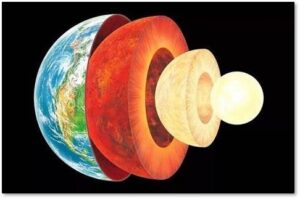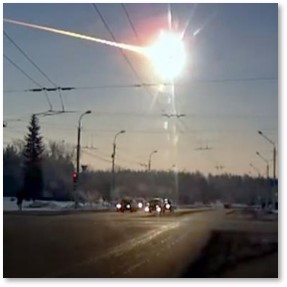As January draws to a close, we have big doings to consider. They come from above the earth and inside the earth and the nightly news has little to say about them. The news anchors are too busy talking about Taylor Swift, Prince Harry, George Santos and the latest murder trial. So, here goes.
Inside the Earth’s Core
 What you have to know is that the earth’s iron inner core may have stopped spinning and may be reversing direction. If that sounds like a big thing, it is. “Nature Geoscience” last week published an article called, “Multidecadal variation of the earth’s inner core rotation,” by Yi Yang and Xiaodong Song of Beijing University.
What you have to know is that the earth’s iron inner core may have stopped spinning and may be reversing direction. If that sounds like a big thing, it is. “Nature Geoscience” last week published an article called, “Multidecadal variation of the earth’s inner core rotation,” by Yi Yang and Xiaodong Song of Beijing University.
If you wonder why the mainstream news ignored it, the answer may lie in the article’s convoluted language. Here’s the abstract:
“Differential rotation of Earth’s inner core relative to the mantle is thought to occur under the effects of the geodynamo on core dynamics and gravitational core–mantle coupling. This rotation has been inferred from temporal changes between repeated seismic waves that should traverse the same path through the inner core. Here we analyse repeated seismic waves from the early 1990s and show that all of the paths that previously showed significant temporal changes have exhibited little change over the past decade. This globally consistent pattern suggests that inner-core rotation has recently paused. We compared this recent pattern to the Alaskan seismic records of South Sandwich Islands doublets going back to 1964 and it seems to be associated with a gradual turning-back of the inner core as a part of an approximately seven-decade oscillation, with another turning point in the early 1970s. This multidecadal periodicity coincides with changes in several other geophysical observations, especially the length of day and magnetic field. These observations provide evidence for dynamic interactions between the Earth’s layers, from the deepest interior to the surface, potentially due to gravitational coupling and the exchange of angular momentum from the core and mantle to the surface.”
Basically, it means, “Not to worry. This happens every 70 years give or take.” Still, it seems like a really big thing to me. After all, rotation of the earth’s core affects the magnetic field that protects us from the sun’s radiation, the length of our day, and maybe climate as well.
Not that we can do anything about it, of course. The core is 3,000 miles inside the earth. But if you want to know more, watch this interesting video. You can also listen to Prof. Michio Kaku explain why the core of the earth may have stopped spinning. I must admit that scientific explanations containing the word “probably” make me uneasy.
Another “Near Miss”
On Thursday night, another asteroid, 2023 BU, did a “near-miss” fly-by of planet earth. Remember “near miss” really means a “near hit.” This space rock, the size of a school bus or a delivery truck, approached our planet at only 2,200 miles above the southern tip of South America. That’s 10 times closer than the ring of satellites orbiting earth to provide us with Facebook, Twitter, and GPS directions.
 Again, however, we are directed not to worry. NASA assures us that an even closer approach would cause the asteroid to burn up in the atmosphere. And some pieces might actually fall to ground as meteorites. Worry only if you’re living underneath one when it hits.
Again, however, we are directed not to worry. NASA assures us that an even closer approach would cause the asteroid to burn up in the atmosphere. And some pieces might actually fall to ground as meteorites. Worry only if you’re living underneath one when it hits.
The people of Chelyabinsk watched this happen up close and personal in 2013, after scientists had told them there was no risk of collision. And there wasn’t — from this meteorite. The rock that exploded was a second incoming asteroid that they had missed completely.
NASA has successfully tested a way to shove an asteroid off its trajectory. The Double Asteroid Redirection Test (DART) impactor deliberately smashed into the moonlet asteroid Dimorphos on September 26. That collision pushed Dimorphos into a smaller, faster orbit around its big brother Didymos. To me, it looked like a mosquito hitting a bowling ball but the test, proved that we can alter the course of a planet-killer. Good news, right?
Keep in mind, though, that the DART launched in November of 2021 and struck Dimorphos on September 27 of 2022. That’s umm, (counting on fingers) 10 months from launch to impact. NASA first learned of the new asteroid two weeks ago. If we’re going to get effective at protecting earth against rogue asteroids, NASA has to speed things up—a lot.
The Green Comet Visits Earth
No, that name doesn’t mean the comet is environmentally friendly or will help us counter global warming. It’s called the Green Comet because it’s, well, green. The color comes from carbon in the gas cloud, or coma, surrounding the nucleus. This long-period comet, last seen 50,000 years ago—when Neanderthals lived on earth—was discovered last March.
 The Green Comet came from the Oort Cloud, a spherical cloud of small rocky and icy bodies that astronomers hypothesize orbits the sun beyond the orbit of Pluto and up to 1.5 light years from the sun. This deep-freeze source for comets is believed to stretch more than one-quarter of the way to the next star. We have never actually seen it, though.
The Green Comet came from the Oort Cloud, a spherical cloud of small rocky and icy bodies that astronomers hypothesize orbits the sun beyond the orbit of Pluto and up to 1.5 light years from the sun. This deep-freeze source for comets is believed to stretch more than one-quarter of the way to the next star. We have never actually seen it, though.
Astronomers found the Green Comet with the Zwicky Transient Facility, a wide-field camera at Caltech’s Palomar Observatory, which contributed to its unwieldy name of comet C/2022 E3 (ZTF).
The Green Comet will be best seen in the northern sky of the northern hemisphere but you will need good binoculars or a telescope to see it well because it won’t be as bright as comets Hale-Bopp or Hyakutake in the mid-1900s or Neowise in 2020. And Neowise was pretty dim. We saw it with binoculars but would not otherwise have found it in the night sky.
